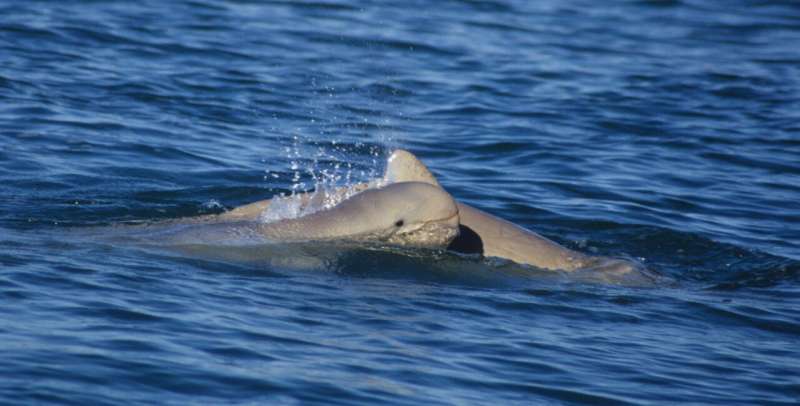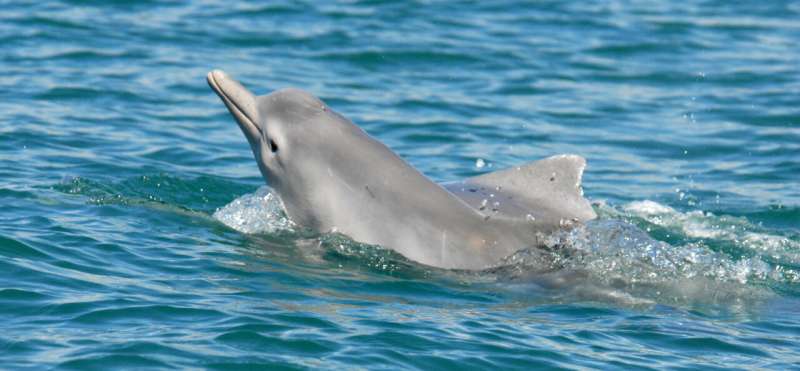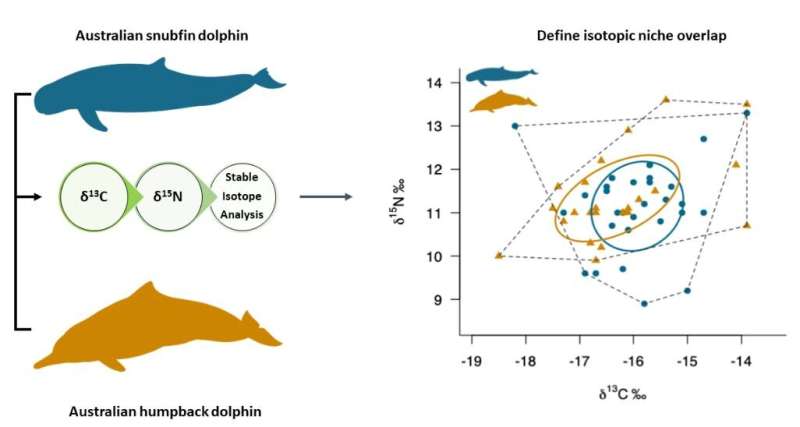Living together: How two different species of dolphins coexist in Australia

New research by Flinders University scientists sheds new light on the reasons why two species of dolphins coexist in the northern Australian waters.
Australian snubfin (Orcaella heinsohni) and humpback (Sousa sahulensis) dolphins live in sympatry throughout most of their range, primarily in shallow (less than 30m deep) tropical/subtropical coastal waters from southern New Guinea across northern Australia.
"A major challenge in ecology and conservation is to understand the means by which species coexist as this is the basis of biodiversity," says Associate Professor Guido Parra Vergara, lead author of the research published in the journal Ecology and Evolution.
"If we are to understand the effects of global change on marine mammal biodiversity, and how we can maintain assemblages of coexisting species, we need to understand their patterns of co-occurrence; the biological significance of their interactions, and the mechanisms underlying their coexistence."
Ecological niche theory predicts the coexistence of closely related species is promoted by resource partitioning in space and time. Understanding how different species of marine mammals such as dolphins co-exist is particularly challenging due to their size, high mobility, longevity, and the fact that they spend most of their time underwater.

Ecologically, both species are similar. Each occur in small populations of typically fewer than 150 individuals, show a high degree of overlap in space use, have similar patterns of habitat use and behavioral activities according to space and time, and are recorded frequently in mixed species groups.
Thus, segregation into exclusive ranges in space and time, and difference in habitat use and behavior patterns, do not seem to fully explain their coexistence.
To compare stable isotope ratios of carbon and nitrogen in their skin, researchers collected skin samples from live Australian snubfin and humpback dolphins along the east coast of Queensland.
Differences in carbon isotope ratios are passed up the food web to consumers, providing a quantifiable estimate of habitat and resource use. In contrast, nitrogen isotope ratios increase at each trophic level with top predators having higher nitrogen isotope values compared to lower trophic levels.
The results of the isotope analysis suggest that while both dolphin species feed at similar trophic levels, have substantial dietary overlap and rely on similar basal food resources, there are subtle differences in their habitat use and prey selection that may promote the coexistence of Australian snubfin and humpback dolphins.

Snubfin dolphins forage on a wider diversity of prey, while humpback dolphins forage on a wider range of habitats.
This information elucidates some of the mechanisms of coexistence between these ecologically similar dolphin species and highlights the importance of prey and habitat diversity for the conservation of dolphin communities.
"Food diversity and abundance and habitat heterogeneity are key factors promoting the coexistence of these two dolphin species, and pressure from overfishing and pollution that could reduce prey abundance and diversity or deteriorate their habitat quality could affect the future of such dolphin co-existence," says Associate Professor Parra Vergara.
"Because dolphins play important roles in maintaining the structure and function of marine communities and ecosystems, any pressures on their food and habitat resources need to be considered when planning future multi-species conservation."
More information: Guido J. Parra et al, Isotopic niche overlap between sympatric Australian snubfin and humpback dolphins, Ecology and Evolution (2022). DOI: 10.1002/ece3.8937
Journal information: Ecology and Evolution
Provided by Flinders University





















